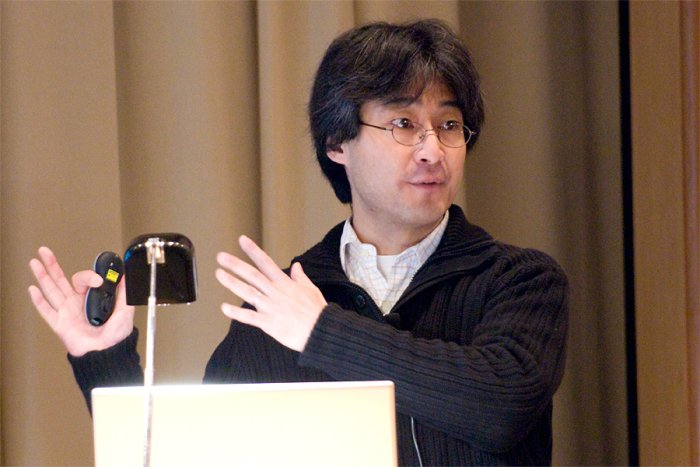Director's Corner
6 March 2008
 Barry Barish |
Science at Sendai
The ILC community has gathered at Sendai in Japan this week for the joint Asian Committee for Future Accelerators (ACFA) Physics and Detector Workshop and Global Design Effort meeting. The opening session of the meeting was highlighted by a forward-looking science talk by Hitoshi Murayama, called "ILC, Future Particle Physics and Cosmology." Hitoshi pointed to a strong convergence between particle physics and cosmology and gave several arguments why in order to "understand physics at the largest scale of the universe, we need to understand the smallest scale: elementary particles." In the process, he motivated the future need and role of a linear collider by showing its complementarity to the LHC for TeV-scale physics, creating an analogy to the very successful multi-waveband approach used in astronomy and specifically by giving several illustrative examples from other fields of physics.
The problem of dark matter is perhaps the most dramatic example of the strong interplay between astrophysics and particle physics. From many pieces of evidence, it is clear that a substantial fraction of the mass of the universe exists in the form of dark matter. In addition to this, evidence suggests that the dark matter could be non-baryonic - different from the ordinary matter we know and consist of. Finding the dark matter is one of the leading challenges in astronomy and astrophysics. The leading candidates are called weakly interacting massive particles or WIMPS, heavy non-baryonic matter that is actively searched for directly in deep underground experiments around the world.
Supersymmetry, one of our most attractive theories for particle physics beyond the Standard Model, predicts particles that could well be WIMP dark matter. If supersymmetric particles are indeed found and studied at the LHC and ILC, Murayama pointed out that it is possible to calculate from those results how much dark matter there should be in the universe. If they are indeed dark matter, the prediction must agree with the astrophysical observations.
Supersymmetry, one of our most attractive theories for particle physics beyond the Standard Model, predicts particles that could well be WIMP dark matter. If supersymmetric particles are indeed found and studied at the LHC and ILC, Murayama pointed out that it is possible to calculate from those results how much dark matter there should be in the universe. If they are indeed dark matter, the prediction must agree with the astrophysical observations.
Hitoshi Murayama is MacAdams Professor of Physics at the University of California, Berkeley. He was recently appointed founding Director of the Institute for the Physics and Mathematics of the Universe (IPMU), at the University of Tokyo. The goal of the institute is to study the fundamental laws of nature and the universe from the broad perspectives of mathematics, statistics, theoretical and experimental physics and astronomy. Hiring has begun and Murayama announced at Sendai the "IPMU Opening Symposium" to be held at the University of Tokyo, Kashiwa Campus. Registration is already closed but the symposium will be webcast. Feature speakers at the meeting will include David Gross, Nobel Prize laureate in 2006 and Shing-Tung Yau, Fields Medal winner in 1982.
At Sendai, Murayama discussed many theoretical conjectures in particle physics from extra dimensions to grand unification to why the neutrinos have mass. He said that it is our task to sort out the right physics from the large array of ideas that fill theorists' black (or white-)boards and that both the LHC and the ILC will be needed to do this job. He concluded his talk by saying that “with both LHC and ILC, we hope to see way beyond the energy scale we can probe directly, i.e. unification and string scales or back to the beginning of the universe.”
-- Barry Barish


